Product Name: KX1937 Homemade Rainbow Gyro
Product Code: KX1937
Size: 60*60*35mm
Weight: About 60g
Material: Metal accessories + paper
Color: 7-color
Battery Required: No
Packing: 1000 pcs
Box Specification: 600*450*550mm
Gyro is an ancient Chinese children's toy, which is a rotating body that rotates on the ground. When the gyro is rotating, it not only rotates around its own axis, but also makes a conical movement around a vertical axis. In order to make the gyro stand up, it must continuously apply external force. Once the external force is lost, the gyro will soon fall over because the support, the size, is too small to support its own weight. The duration of gyro rotation is related to the distance of the support point from the ground, the size of the force when rotating, the contact area of the support point with the ground, and friction.
Experimental Principle:
Why does a gyroscope spin without falling over? It's a dynamic state of unstable equilibrium. When a gyroscope spins due to force, the sum of centrifugal forces in all directions reaches a balance, allowing it to temporarily stand on its axis. However, as factors such as air resistance, ground friction, or the gyroscope's center of gravity come into play, the force that spins the gyroscope will gradually weaken until it disappears, and then the gyroscope will sway and fall over to the left or right.
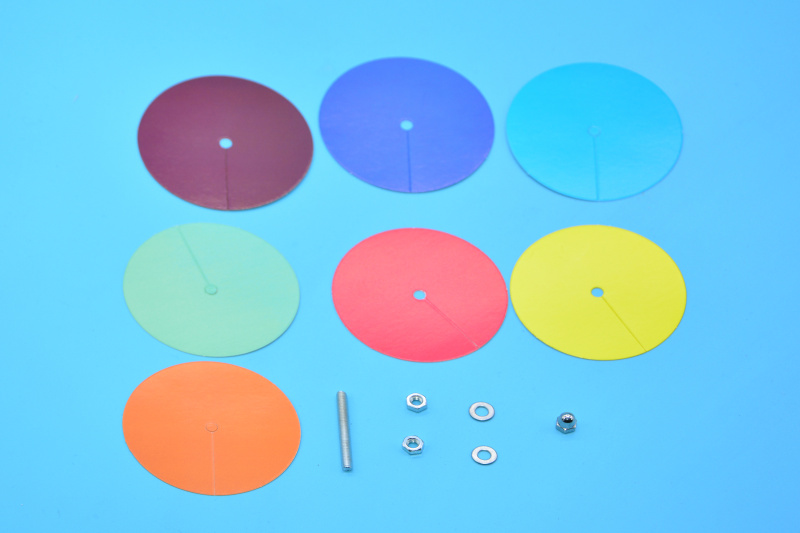
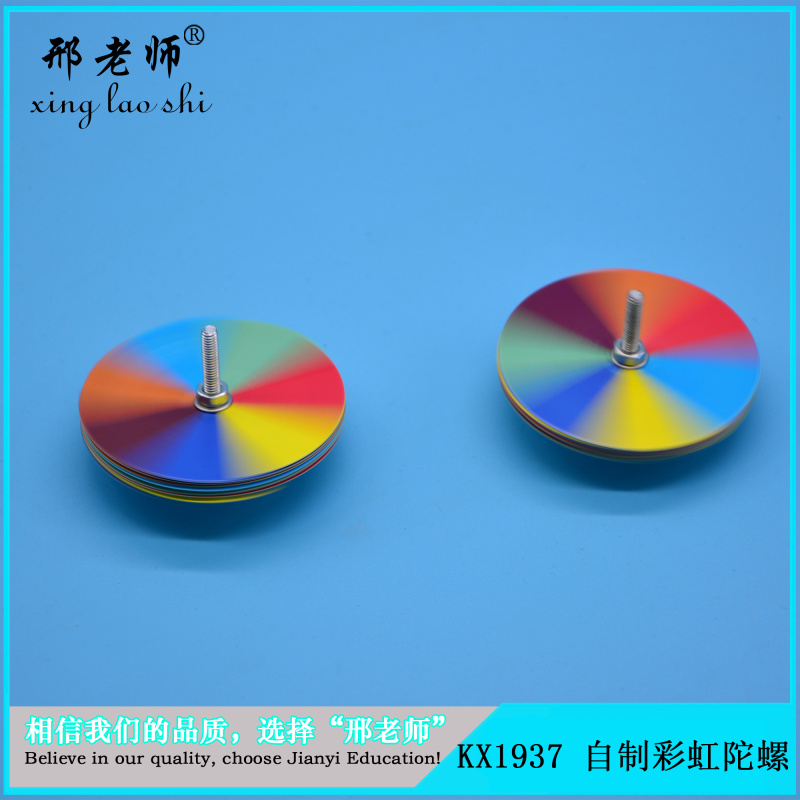
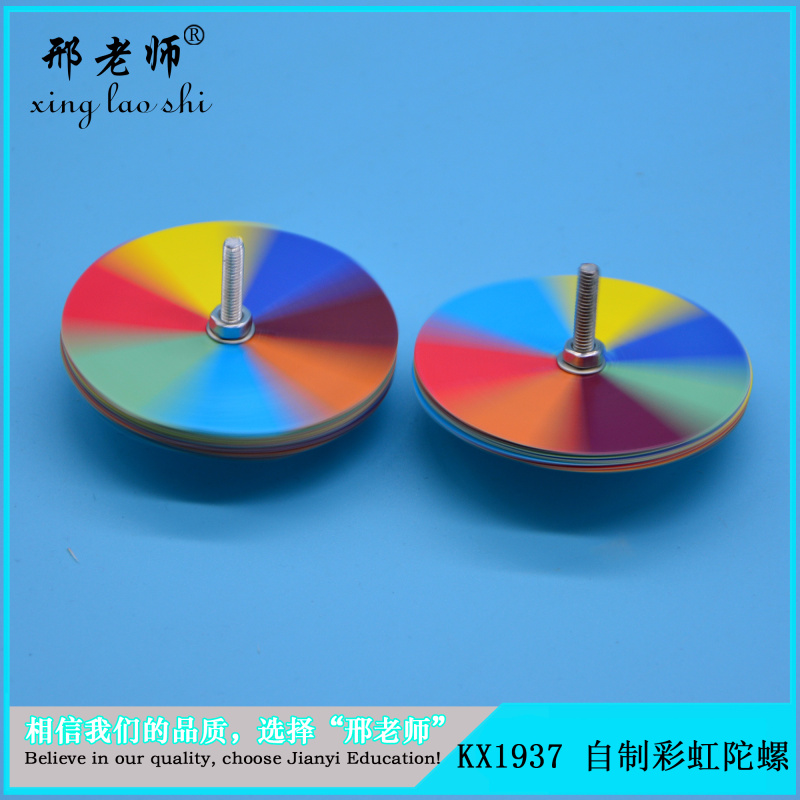
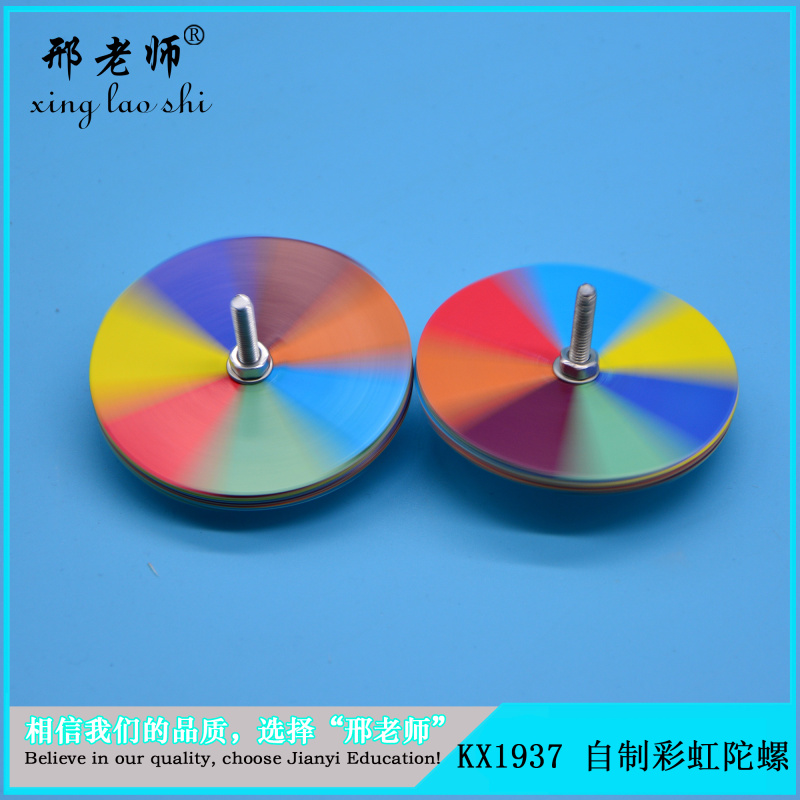
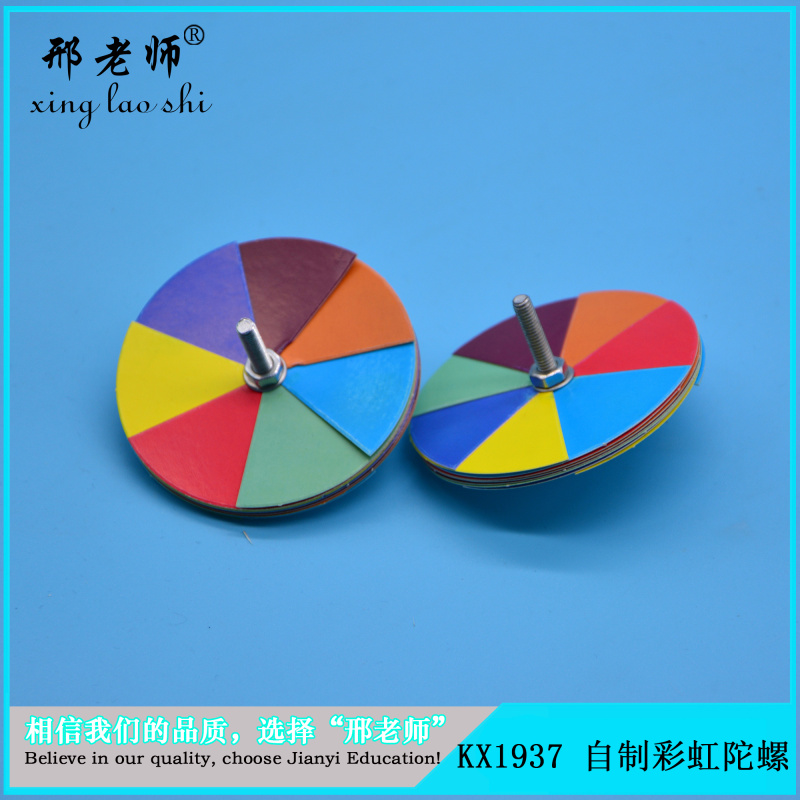
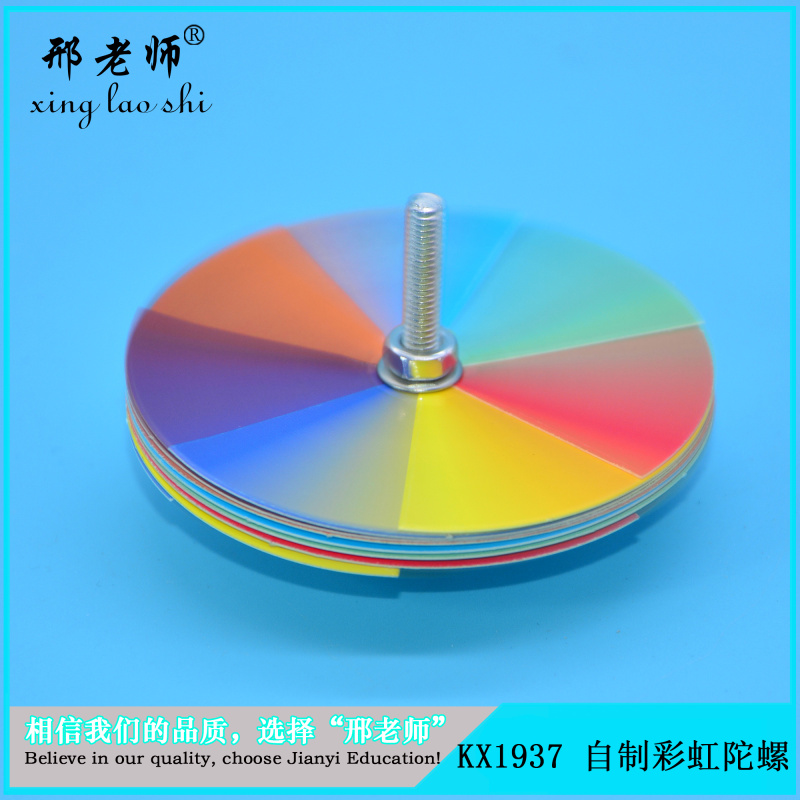
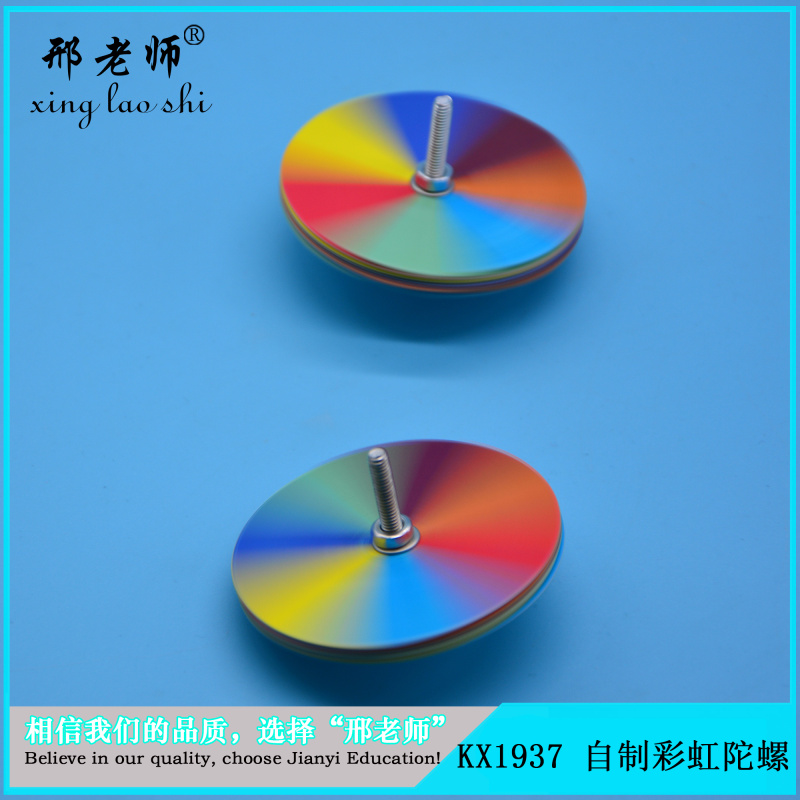
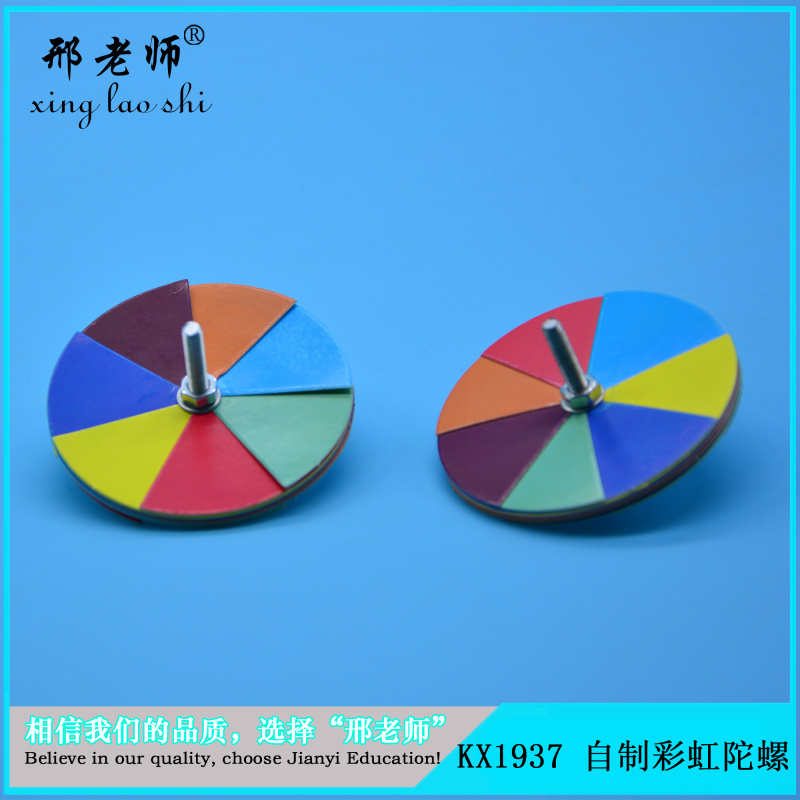
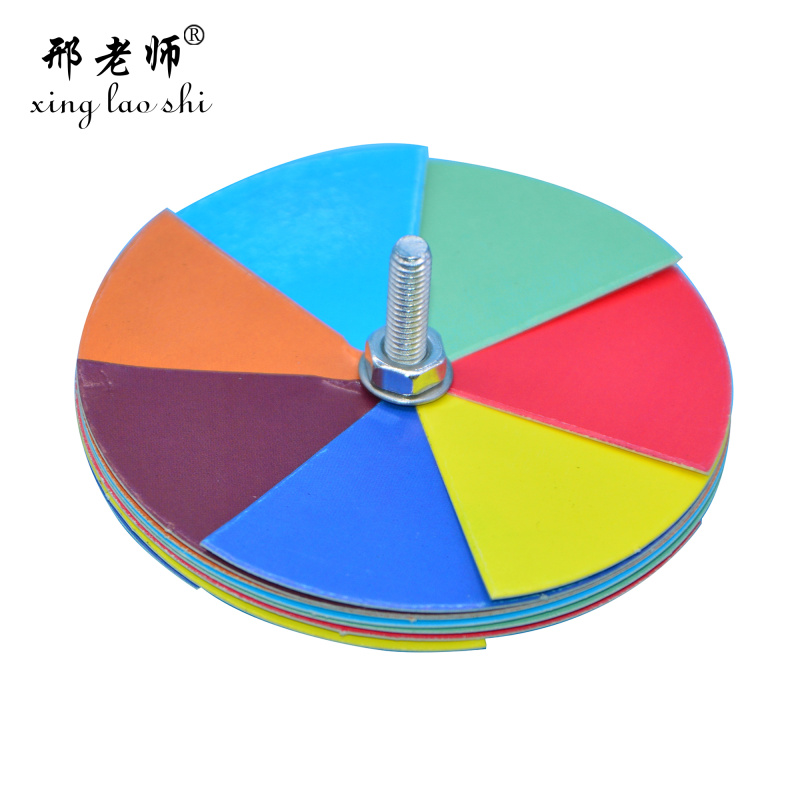
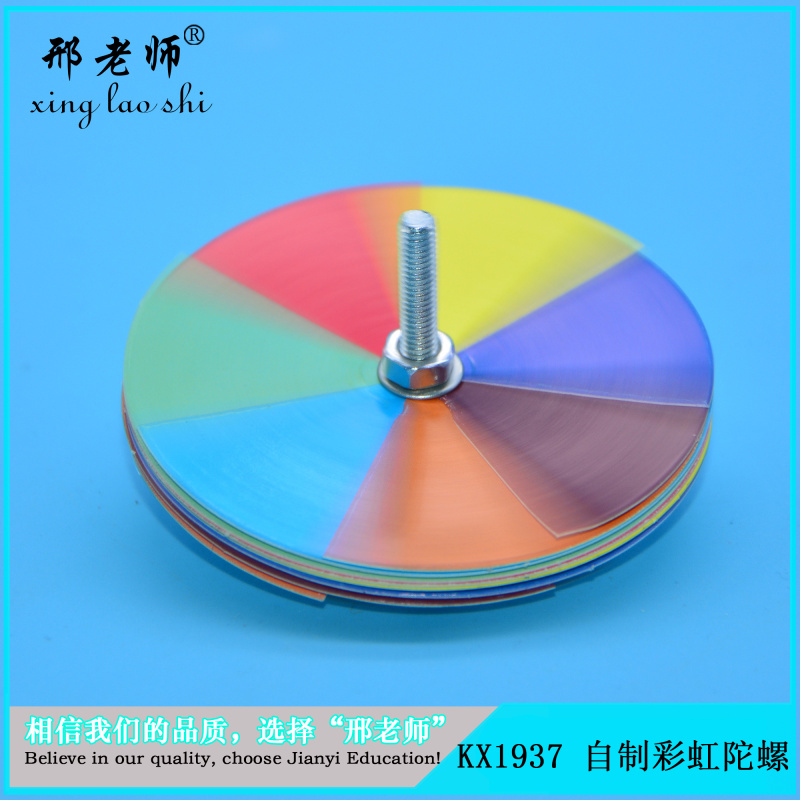
Teaching objectives:
1. Ability to apply the knowledge of light dispersion to make various gyroscopes; during the play, there are discoveries, and can record and express their research results in time.
2. In the process of making and playing with gyroscopes, students develop a sense of cooperation.
3. By playing with a top and conducting experiments with light, understand the relationship between the synthesis of light and the principle of dispersion and synthesis of light.
Teaching Difficulties and Key Points:
1. Ability to apply the knowledge of light dispersion to make various gyroscopes; during the play, there are discoveries, and can record and express their research results in time.
2. By playing with a top and conducting experiments with light, understand the relationship between the synthesis of light and the principle of dispersion and synthesis of light.
Teaching aids
Material Pack
Blackboard Design:
1. Color Light Mixing: The Phenomenon of Persistence of Vision
Section 2: Synthesis of the Three Primary Colors of Light
1. Create a situation and perceive the problem:
Teacher: Who has played with a top?
Speech is free.
Teacher: Is the gyroscope fun?
"Life is fun.
Teacher: How is it fun?
Speech is free.
Teacher: How do you play with a top?
Speech is free.
When I was young, I played with a kind of top that could be spun. Has anyone else played with other types of tops?
Speech is free.
Teacher: Did you make it yourself or did you buy it?
Speech is free.
Teacher: Do you want to make one yourself?
"Life: Think.
Teacher: So for today's class, we're going to make a gyroscope. What do we use for a gyroscope? It's very simple, a piece of paper. I believe after this class, you'll be able to make one.
Section Two: In-depth Exploration and Experience, Solving Problems:
Activity 1: Making a top.
Teacher: (First shows several gyroscopes that have been made) Do you all know how to make a gyroscope? Who would like to share their ideas?
After the student freely speaks, the teacher demonstrates and supplements the explanation of the method and steps, and then allows students to exchange their own methods of making gyroscopes. Teacher: Now, let's move your little hands to make your own gyroscope!
Create a top spinning toy.
During the production process, it is important to remind students to be safe when using scissors.
Teacher: Don't forget to paint the gyroscope with beautiful colors!
Paint the gyroscope.
Coloring Requirements:
Each group is required to paint a gyroscope according to the color ratio suggested in the textbook.
Then let the students paint any color on the gyroscope they have made, which can be two, three, or more colors.
Activity 2: Play with a top.
Teacher: Students, you are great! The gyroscopes you made are really beautiful. How can we make the gyroscope spin more stably?
Live freely and answer freely.
Teacher: Now everyone, let's get your hands on it and make it spin.
(1) Repeatedly experiment with each gyroscope painted with a different color, and carefully observe what color the spinning gyroscope presents?
(2) Guide students to record the observed phenomena in time to facilitate reporting and communication.
Group report and exchange.
Teacher's summary: Different colors become one color, seven colors become white.
Teacher: If you still want to study this problem, you can also conduct in-depth research on materials. Do you know what this is? It's a visual persistence phenomenon. Why can't the eyes distinguish the fast-rotating patterns? This is a visual persistence phenomenon, and the teacher will write it on the blackboard.
It looks like a circle when you rotate it, so can you think of any applications for this visual persistence phenomenon?
Live freely and answer freely.
Teacher: Animation is a use of human visual phenomena, so how should this color light mixing be explained? I have a gyro here, which I made myself. What color does it turn when it spins? (Gray white, the color seems to disappear all of a sudden), If you are interested, you can try to make one yourself. What color does a gyro with rainbow colors turn when it spins? Newton once did this experiment for everyone. He can explain a scientific truth to everyone. What is it exactly?
Answer directly (point to the person).
Teacher: Around 1666, when Newton was 24 years old, he used a prism to decompose white sunlight into seven colors, which is the rainbow. When he enthusiastically reported this discovery to everyone, he was strongly opposed by everyone. Newton, in order to verify that seven colored light can also be synthesized into white light, conducted this experiment with a gyroscope, which made everyone understand his scientific discovery.
Activity 3: Let's explore the ever-changing light.
The situation of superimposing the three primary colors of light (red, green, and blue).
1. My Observation Record Table (First let the students fill in by themselves, and then the teacher summarizes)











